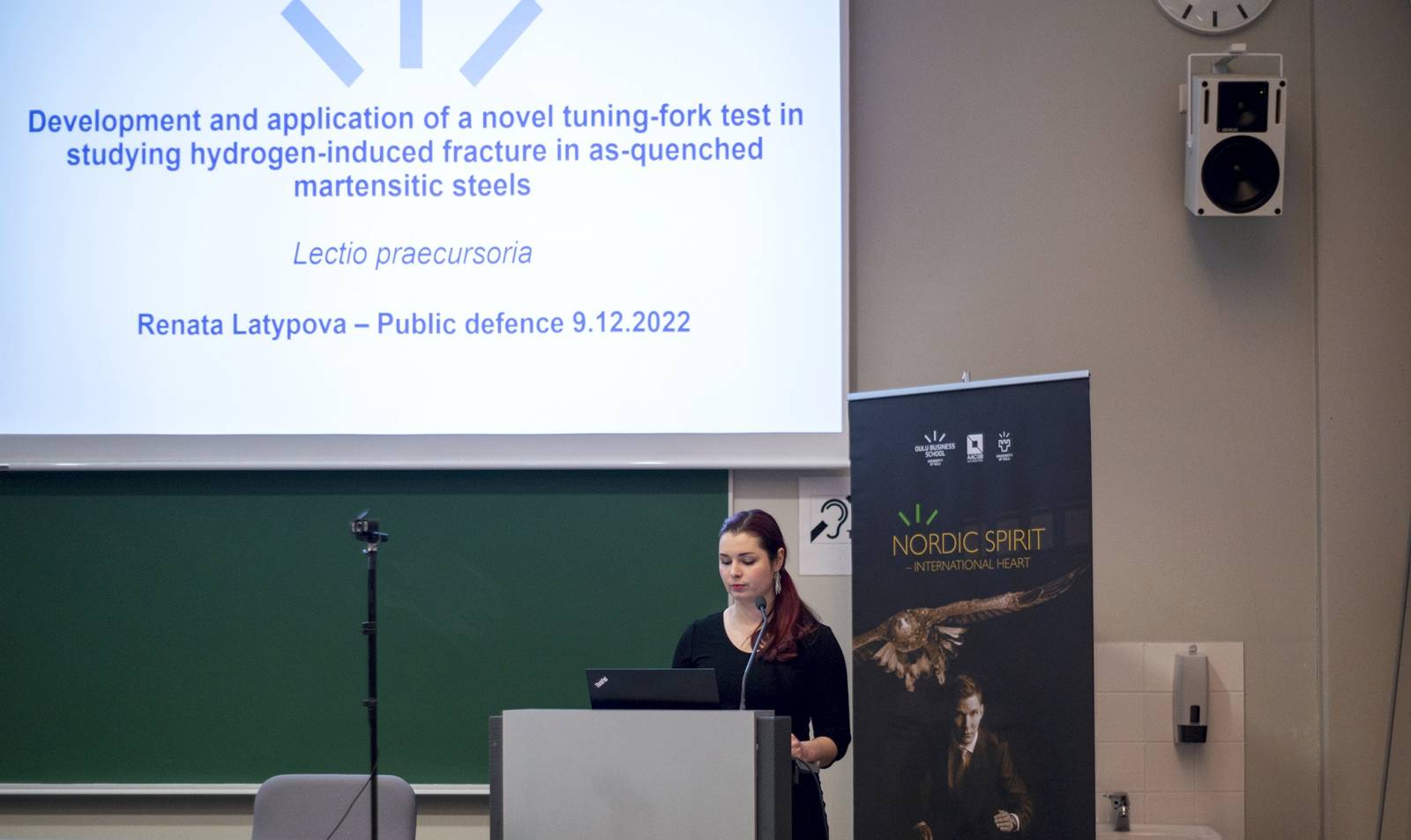The novel Tuning-fork testing (TFT) method utilises constant displacement to stress the tuning-fork specimens by bending, which is combined with in situ electrochemical hydrogen charging. With an isolated tensile stress region, crack initiation is controlled, and can be monitored with different clamping arrangements. The main objectives were to create a compact, simple, and fast testing method that allows ranking of UHSS, and to investigate the effects of prior austenite grain (PAG) structure on HE susceptibility. Traditional hydrogen permeation tests complement the TFT results with a set-up built and refined within this thesis.
The first part of the TFT implementation is composed of an evaluation of the HE susceptibility of 300–600 HBW martensitic steels with relative threshold stress levels. Increasing the strength level leads to lower threshold stress levels and increased susceptibility to HE, especially for steels with over 400 HBW hardness. With the addition of a loadcell to the TFT clamping system, a more precise investigation was conducted for 500 HBW steels with various PAG structures. The effect of PAG morphology (elongated/equiaxed) on HE susceptibility was studied with steels that had different alloying compositions and with steels that had different PAG morphologies but the same alloying.
An elongated PAG structure leads to enhanced resistance against HE in comparison to equiaxed PAG structures. Crack propagation rates were slower with more elongated microstructure, which is linked to transgranular quasi-cleavage crack propagation and slower hydrogen diffusion. Equiaxed microstructure exhibits partly intergranular cracking with faster crack propagation rate and hydrogen diffusion. Crack propagation was affected by the microstructure alignment of the elongated PAG structure, but the equiaxed structure did not show orientation differences. No correlation was observed between hydrogen diffusivities and different PAG boundary surface areas. However, the density of reversible hydrogen traps increased with decreasing amount of PAG boundaries, indicating that PAG boundaries may act as strong hydrogen traps in the investigated steels.
Renata Latypova defended her “Development and application of a novel tuning-fork test in studying hydrogen-induced fracture in as-quenched martensitic steels” thesis successfully on 9.12.2022. The thesis can be found from:
http://urn.fi/urn:isbn:9789526235103,
and her latest (published) development of the Tuning-fork testing can be read through: http://jultika.oulu.fi/Record/nbnfi-fe202101111479.

